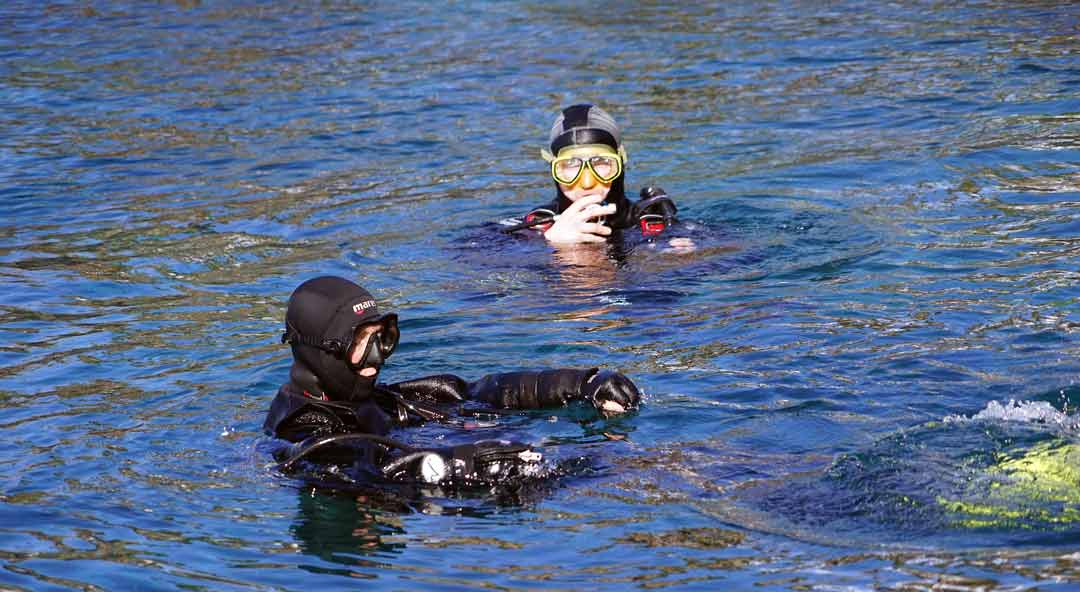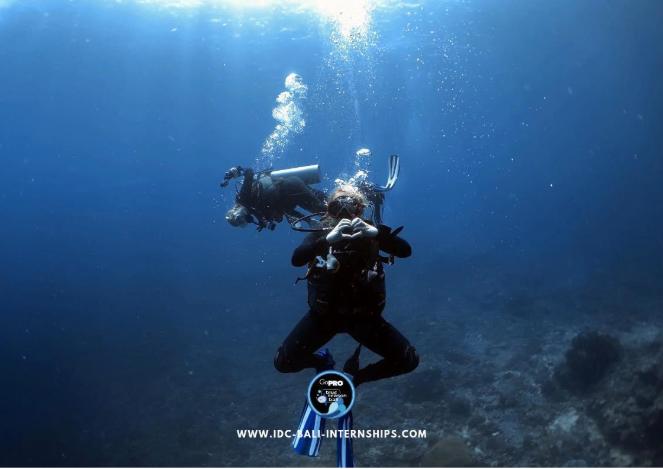What to do when your diving boat leaves during your dive? Think like a Divemaster
To be left during a dive session is every diver’s worst nightmare. You surface from an exciting or interesting dive only to discover that your diving boat is nowhere in sight. Although this situation is a rare occurrence, it’s not unimaginable to happen. How do you avoid this situation? And if you do get left behind, what actions should you take?

The best way to avoid a situation where the diving boat leaves you is for it not to let it happen in the first place. Here are a few tips that will come in handy and ensure that you’ll get back to your dive boat.
All according to plan; plan the dive, dive the plan
It’s an old diver’s tip, but it’s worth repeating to remind everyone. The best way to avoid being left behind by the diving boat is to plan the dive and dive the plan. This is what a dive briefing is for, to remind and run through the entire plan with everyone on the boat.

Keep your eye on the compass: Pay attention to where your compass is telling you to go. Is the dive site you’re headed pointing north, south, east, or west? Which direction will take you back to the boat?
Navigate: Keep in mind the depths of the variety of dive sites you visit. The topography of the site will drop navigational hints and help you navigate your way around the dive site. Even significant landmarks can help you determine where you are and how to get back.
Stay alert: Be aware of any areas within the dive site that your instructor advises may have strong currents that can pull you away from the dive site. There are reasons for everything, so if your dive instructor has told you not to dive a particular area, don’t.
Timing is everything: As soon as you’re in the ocean, record your time. Remember when your instructor or boat captain has instructed you to surface. Some boat captains use a specific signal to indicate pickup from their vessel.
Know where you’ll enter and exit: Note how and where you will be entering and exiting the ocean from. Is the boat captain and crew expecting you to navigate back to the boat on a line? Or perhaps it’s a drift dive where the diving boat will move to a more specified area?
Bringing the right gear
Make sure you take not only the right equipment but also a fully functioning one for the dive. No matter how well a dive is planned, separations may occur caused by the equipment. The appropriate and functioning diving equipment can help turn a potentially critical situation into a minor inconvenience. But which equipment is necessary?
- DSMB/SMB: Short for Delayed Surface Marker Buoys or Surface Marker Buoys, also called ‘safety sausages’. Those are standard gear for every diver on every dive.
- MIRRORS: Mirrors are used as a form of a signal on the surface to reflect light and catch the eye of passing boat or air traffic in a state of an emergency. A dedicated signal mirror is available for purchase, but if you’re on an extremely tight budget, bring an old CD in your BCD pocket and use it as a makeshift alternative during your dive.
- LIGHTS: Lights are one of the most frequently used diving equipment. They are used to avoid separation during night dives or in challenging visibility. It’s as simple as clipping a strobe to your equipment. Many divers also carry a torch during daylight; not just to shine into crevices, but also to signal the boat if the light is beginning to disappear.
- NOISE: None of the visual devices listed above are useful if the dive boat’s captain and your dive crew are looking in the other direction. Most modern BCDs come with a whistle. If yours doesn’t have one attached, get one yourself before the dive.
- MODERN TECHNOLOGY: For those who want to invest their money on diving tech, solutions such as the Nautilus Lifeline can act as your security blanket. This GPS tracker locates your exact position within 4 feet (1.5 m) in a 30-mile (50 km) radius. Simply press the distress button in an emergency and the dive boat will be able to find you.
What you’ve just read is a small fraction of what you will learn during your PADI Divemaster course. Other safety-related topics include:
- How to supervise dive activities and assist students through challenging situations
- Diver safety and risk management
- Awareness of the dive environment
And many others that revolve around becoming a great PADI Divemaster.
For more information on this specific diving course and what Blue Seasons Bali can offer, check out our website and Contact us.



